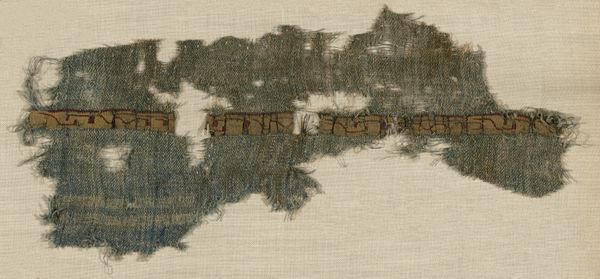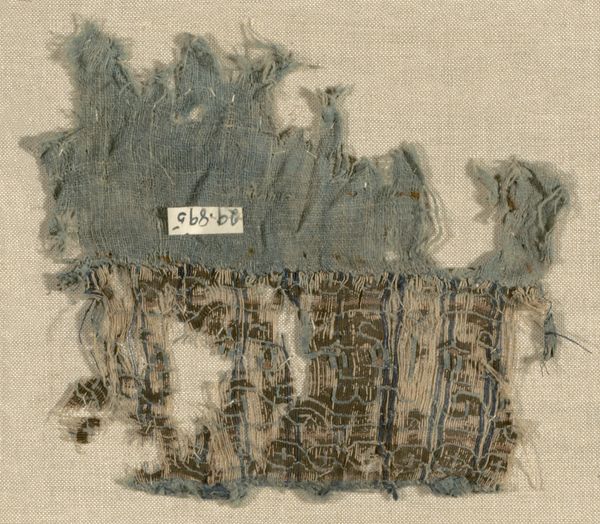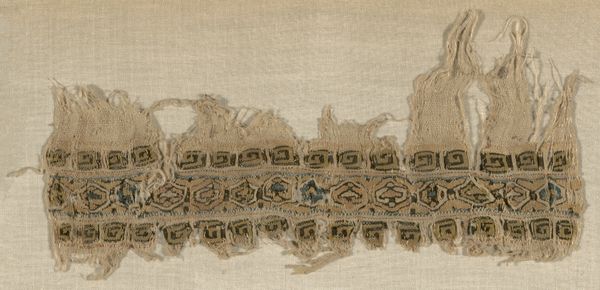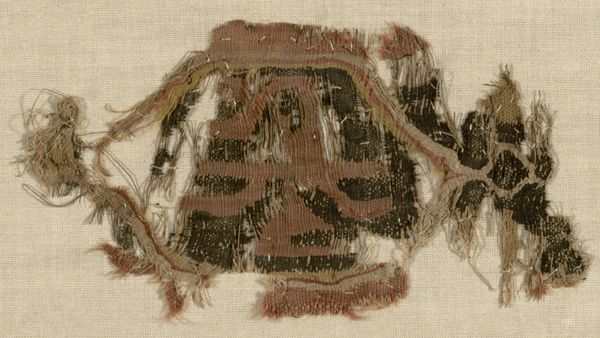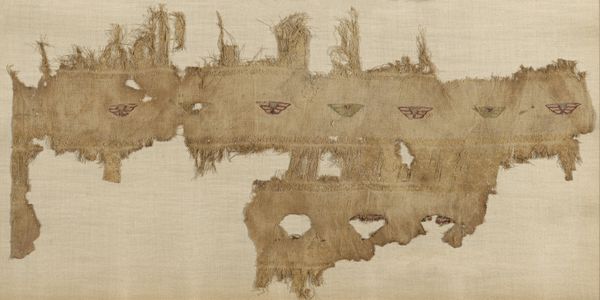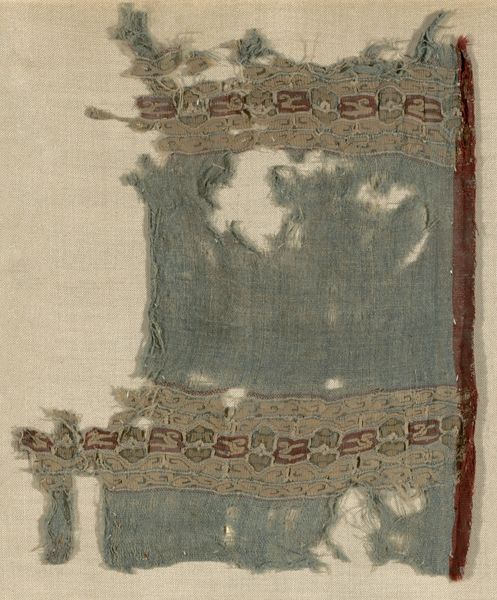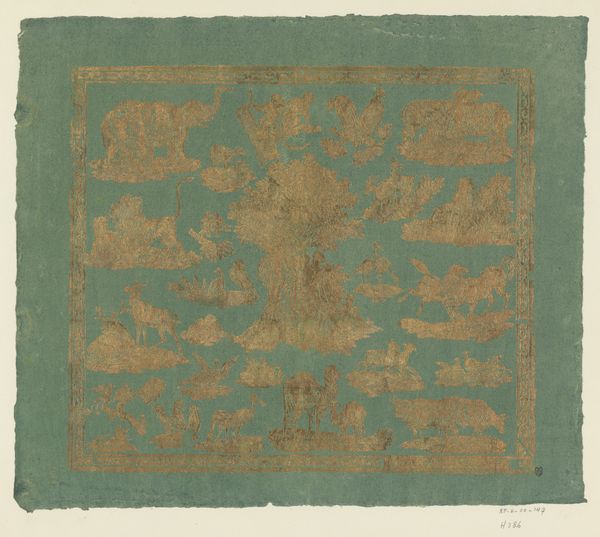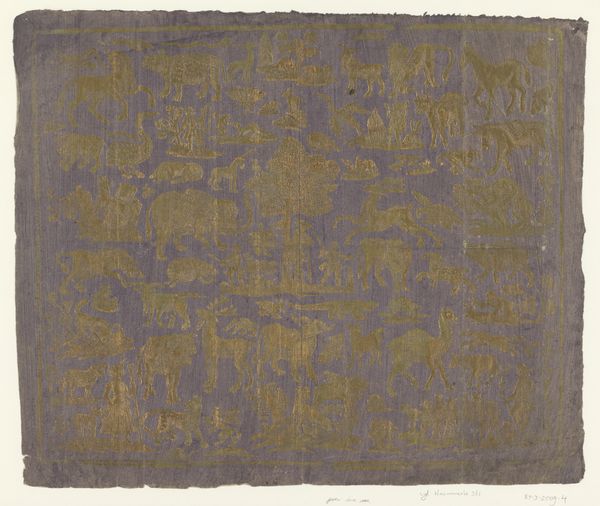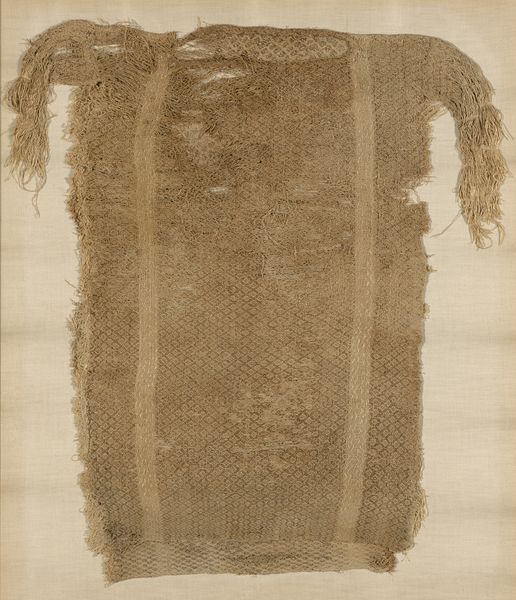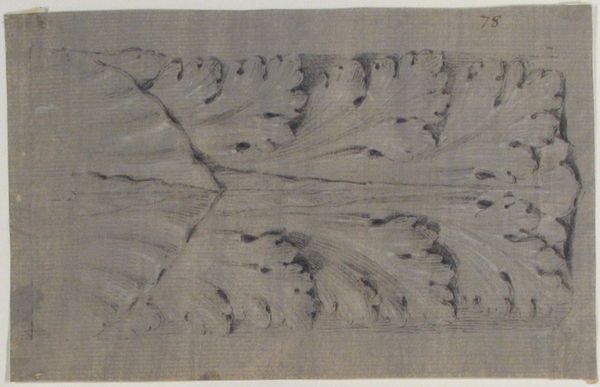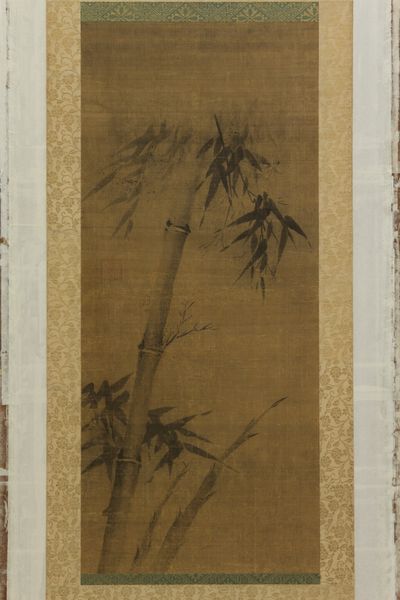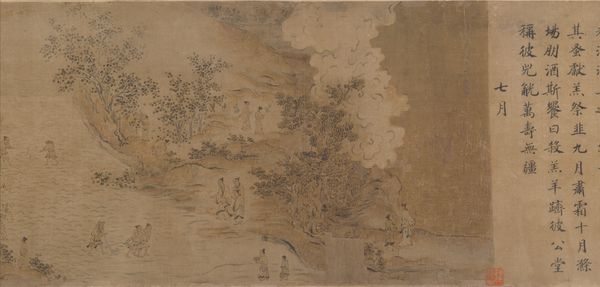
fibre-art, weaving, textile
#
african-art
#
fibre-art
#
medieval
#
weaving
#
textile
#
egypt
#
islamic-art
Dimensions: 12.7 × 15.2 cm (5 × 6 in.)
Copyright: Public Domain
Curator: The artwork we’re looking at today is simply titled "Fragment." This textile piece, created sometime between 969 and 1171, is attributed to an anonymous artist from Egypt, made using weaving. Editor: It's evocative! The worn quality creates a powerful image—something like a ghost. I notice the fragility of the fiber, and how the visible degradation of time speaks to the vulnerability of existence and cultures. Curator: I think it also holds power in that fragility, if that makes sense. Consider how, in Islamic art, textiles carry stories, function as maps of identity. Editor: Exactly, and you can interpret the fragmentation of the piece through this lens as reflective of political unrest within Egypt during the medieval period and how Islamic identity, traditions, or narratives were perhaps vulnerable to further change. Curator: That interpretation works. And speaking of symbolism, fiber arts in many ancient societies are often associated with women's work, domestic spaces, so this fragment could invoke ideas of preservation, creation, or legacy as those themes get visually embodied in textile. Editor: Right—but it also prompts questions. What stories did this textile once tell, before it became a "fragment"? What specific purpose did it serve, and what community might it have been integral to? We must also remember those whose names are unrecorded—unrecognized labor is as worthy of recognition and remembrance. Curator: Precisely, to reconstruct its meanings and connections we can remember weaving as not merely a craft, but as an expression of self and community passed down. Each piece carries meanings and intention, echoing the lives of people involved with its production. Editor: A hauntingly beautiful reminder of stories woven into our collective cultural narrative. The past always returns to challenge, engage, and teach. Curator: Well said. It's also a physical reminder of how intertwined weaving, preservation, identity, and collective memories really are, despite missing or incomplete narratives of what used to be.
Comments
No comments
Be the first to comment and join the conversation on the ultimate creative platform.
